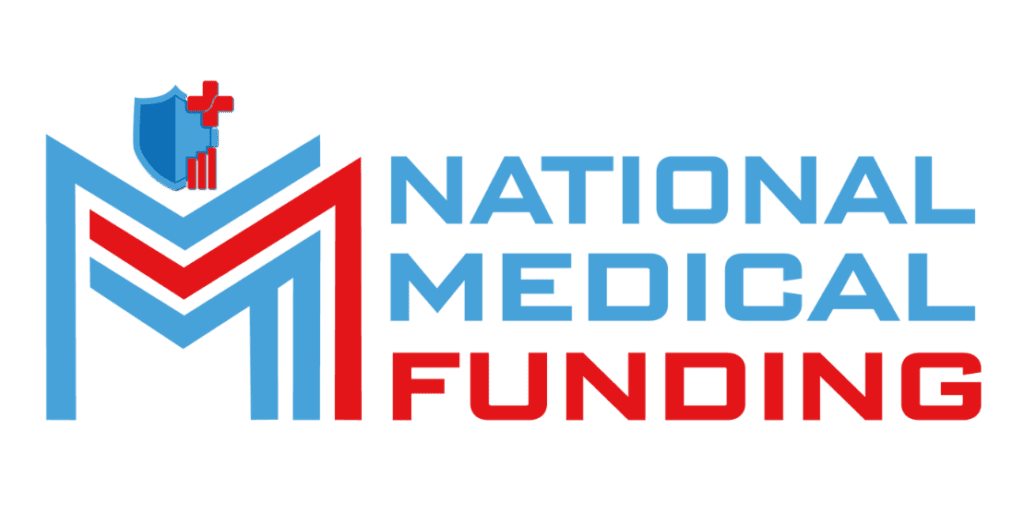
Boosting Medical Practice Valuation: How Smar
Why Practice Valuation Matters More Than Ever If ...

Saturday and Sunday – CLOSED
support@nationalmedicalfunding.com



Running a medical practice takes more than great clinical skills—it takes great people. From front desk coordinators to skilled nurses and specialized physicians, your staff shapes your patients’ experience and your practice’s success. But hiring top medical talent doesn’t come cheap. Salaries, onboarding, and training costs can pile up fast—especially when cash flow feels tight.
That’s where secure medical financing comes in. Working capital loans can give your practice the financial breathing room to hire, train, and retain the team you need to grow confidently. Whether you’re running a solo clinic or managing a multi-location practice, medical financing solutions can help you scale your staff without stretching your resources thin.
Let’s explore how working capital loans can transform the way you grow your team, attract top talent, and build a practice that thrives for years to come.
Finding great people in healthcare isn’t easy. The competition for qualified professionals—especially nurses, physician assistants, and specialists—is fierce. Many clinics are feeling the strain, with increased workloads and burnout rates climbing across the healthcare sector.
Even if you find the right candidates, hiring them often demands a significant upfront investment. You’ll need to cover competitive salaries, relocation costs, training expenses, and possibly temporary staff to fill gaps during onboarding. For many smaller practices, this creates a classic catch-22: you need more staff to grow revenue, but you need revenue to afford more staff.
That’s exactly where medical financing solutions step in. A working capital loan helps you bridge this gap—offering access to funds so you can hire first and grow revenue second. Instead of waiting months for profits to catch up, you can take action now and meet patient demand head-on.
Before you start hiring, it helps to understand what a working capital loan really is. In simple terms, it’s short-term funding designed to support your day-to-day operations. You can use it to cover salaries, purchase supplies, pay rent, or manage cash flow between insurance reimbursements.
Unlike long-term loans tied to equipment or property, working capital loans are flexible and fast. They’re ideal for covering immediate expenses—like payroll—while you wait for revenue to flow in. This makes them perfect for medical practices where reimbursements can be unpredictable and cash flow timing is everything.
When you secure medical financing, you’re not just borrowing money—you’re giving your practice stability. It’s like adding a cushion that keeps your operations running smoothly even when patient payments lag or expenses spike.
Let’s shift how we think about hiring. Many practice owners see it as a cost, but in reality, hiring the right people is one of the smartest investments you can make. Each new team member—especially skilled providers—can directly boost your capacity, patient satisfaction, and revenue potential.
Think about it: hiring another physician can double your patient load. Adding a dedicated billing specialist can speed up reimbursements and reduce denied claims. Even hiring an extra nurse can free up doctors to focus on high-value procedures instead of administrative tasks.
Using a working capital loan to fund these hires isn’t about spending recklessly—it’s about investing strategically. When you grow your staff thoughtfully, you’re building a stronger business foundation for long-term success.
A working capital loan gives your practice flexibility—the freedom to act when the right talent becomes available. Instead of losing a qualified candidate because of temporary budget limits, you can move quickly and make the hire.
This kind of agility is crucial in healthcare, where competition for talent is often fierce. Skilled professionals want stability and confidence in their employer. When you’re backed by reliable medical financing solutions, you can make strong offers and show candidates that your practice is well-resourced and secure.
In other words, funding isn’t just about paying salaries—it’s about building trust and credibility. When candidates see that you have the financial backing to grow, they see a future with your practice.

Hiring isn’t just about offering a paycheck. There’s a whole ecosystem of costs that come with expanding your team: recruiting, onboarding, licensing, credentialing, and training—all of which can add up quickly.
Many practices overlook these hidden costs until they hit the budget. For example, you might need temporary staff to cover shifts while new hires are trained. Or you may need to invest in software, uniforms, or specialized tools for your new team members.
Working capital loans can help cover all of these expenses. With secure medical financing, you can plan for the full picture—not just payroll. This ensures your new hires have the tools, support, and systems they need to thrive from day one.
(For more on funding upgrades and improvements, explore The Renovation Roadmap: How to Finance a Patient-Centric Practice Redesign with a Term Loan.)
It’s easy to think of working capital loans as short-term fixes, but they can be the first step in a much larger growth strategy. By using this financing strategically, you can scale your workforce, improve patient flow, and increase your practice’s capacity—all of which lead to stronger, more sustainable revenue.
For example, let’s say you use a working capital loan to hire two additional nurse practitioners. Those new hires allow you to serve 40% more patients per week. That increased volume boosts your revenue enough to pay off the loan faster—and still come out ahead financially.
This is how smart practices use medical financing solutions: not just to fill gaps, but to fuel growth. When used wisely, financing doesn’t create debt—it creates momentum.
As your staff grows, your equipment and technology often need to scale, too. More staff means more workstations, exam tools, diagnostic devices, and administrative software licenses. Balancing these needs is key to ensuring smooth operations.
One smart strategy is to combine working capital loans with other forms of financing, such as medical practice startup loans or equipment leases. For instance, you could use a working capital loan to fund salaries while using an equipment lease to expand your infrastructure. This approach keeps your cash flow healthy and avoids overextending credit.
(Want to explore smart equipment financing options? Check out When to Lease vs Own: A Financial Strategy for High-Value Medical Equipment.)
Some working capital loans are unsecured, while others allow you to use assets as collateral. For medical practices, this can include property, accounts receivable, or even personal investments. The right approach depends on your goals and comfort level.
If you’re confident in your practice’s trajectory, securing a loan with assets can help you access better interest rates or higher borrowing limits. However, you’ll want to make sure you’re using collateral strategically—balancing risk with opportunity.
(For an in-depth look at using personal holdings to strengthen your funding approach, see The Physician’s Guide to Asset-Based Lending: Utilizing Personal Holdings to Secure Practice Funding.)
By using assets wisely, you’re not just taking on debt—you’re using your existing strength to create new opportunities.
Before you apply for a loan, it’s smart to have a clear hiring plan. Start by identifying which roles will create the biggest impact. Do you need another provider to handle patient overflow? A billing expert to tighten cash flow? Or a practice manager to streamline operations?
Once you know your priorities, estimate the total cost for each role, including salary, benefits, and onboarding expenses. From there, you can determine how much funding you need and what kind of loan structure fits best.
Pair this with revenue projections—how much new income each hire can generate—and you’ll have a strong case for financing. This not only helps you secure approval faster but ensures you’re investing in hires that deliver measurable returns.

Even the best funding strategies can stumble if not managed carefully. One common mistake is overestimating immediate returns from new hires. Remember, it can take time for new staff to ramp up productivity and start generating revenue.
Another pitfall is mixing short-term loans with long-term expenses. Working capital loans are designed for immediate operational costs, not multi-year investments. If you need to fund something long-term—like a new facility—consider separate medical practice startup loans or term financing instead.
The key is aligning your funding with your goals. When done right, financing doesn’t stretch your cash flow—it strengthens it.
Once you’ve used financing to expand your team, it’s time to measure the impact. Track metrics like patient volume, revenue per provider, patient satisfaction scores, and operational efficiency. These numbers help you understand how your new hires are improving the practice.
For example, if adding another physician boosts patient visits by 30%, that’s a clear ROI indicator. Similarly, if your billing specialist reduces claim denials, you’ll see a direct improvement in cash flow. These metrics help you validate your investment and prepare for future growth opportunities.
Remember—financing isn’t a one-time solution. It’s an ongoing strategy. The more data you gather, the smarter your future decisions become.
The healthcare landscape is changing fast. Telemedicine, hybrid staffing, and specialized care teams are redefining how practices operate. In this new environment, financial flexibility is no longer optional—it’s essential.
Working capital loans give you the agility to adapt. Whether you’re hiring remote telehealth providers, expanding your nursing team, or adding administrative support, flexible funding lets you evolve without disruption.
Secure medical financing ensures your practice stays ahead of the curve. As patient expectations grow and technology advances, the ability to hire and retain top talent will define your success. Financing is how you make that possible.
At the heart of every successful medical practice is a great team. When you invest in your people, you’re investing in better patient care, smoother operations, and a stronger bottom line.
Working capital loans aren’t just about meeting payroll—they’re about unlocking potential. With the right medical financing solutions, you can hire confidently, plan strategically, and grow sustainably.
Whether you’re a startup clinic or a well-established practice, the key is to see financing as a growth tool—not a last resort. When used wisely, it empowers you to build the team—and the future—your patients deserve.
Why Practice Valuation Matters More Than Ever If ...
Why Ethics Matter in Healthcare Loans Running a c...

Fuel your medical practice’s growth with financial solutions tailored to your needs. We’re here to support independent practitioners and group practices with strategies built for success.
Mon Fri: 8:00am – 6:00pm
Saturday: Closed
Sunday: Closed
Copyright © 2025 National Medical Funding